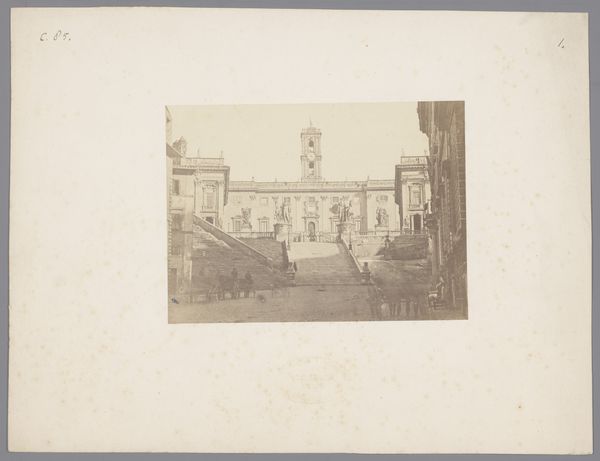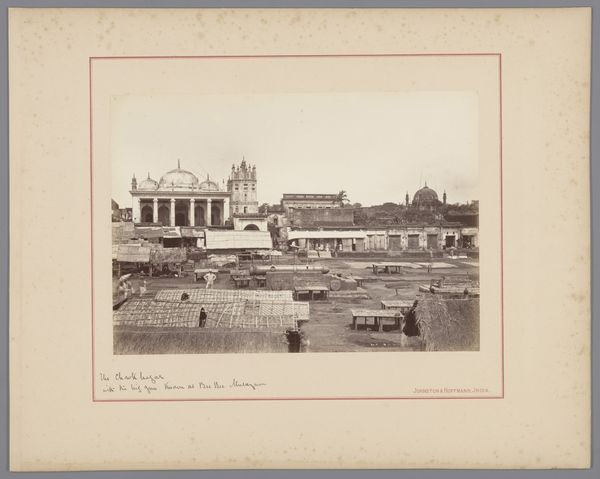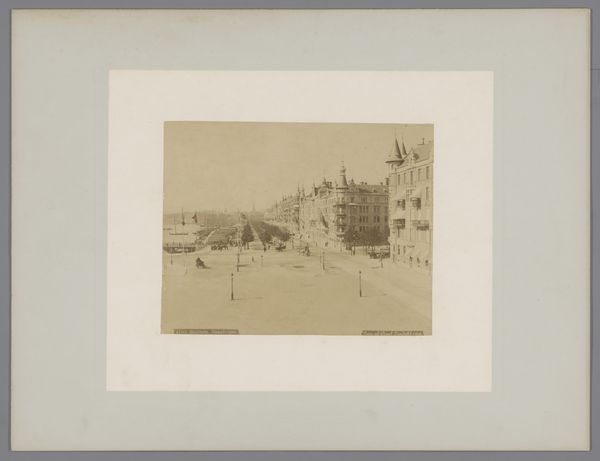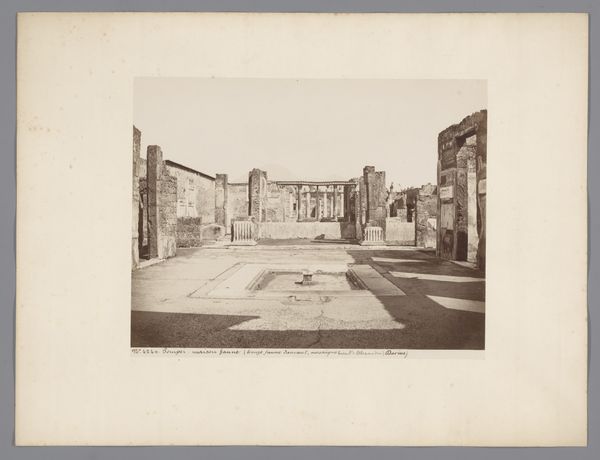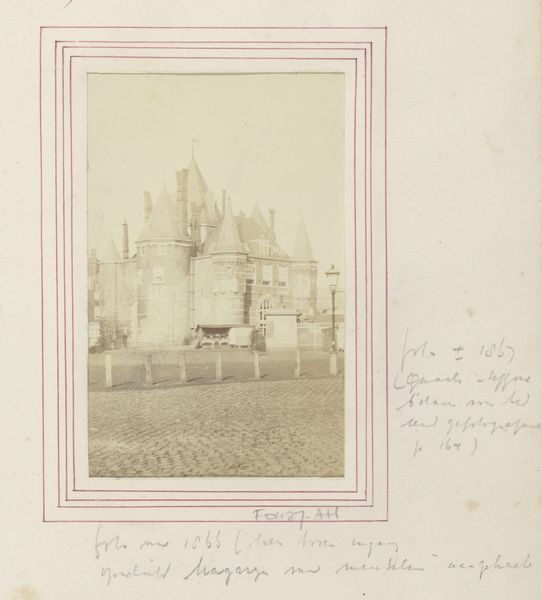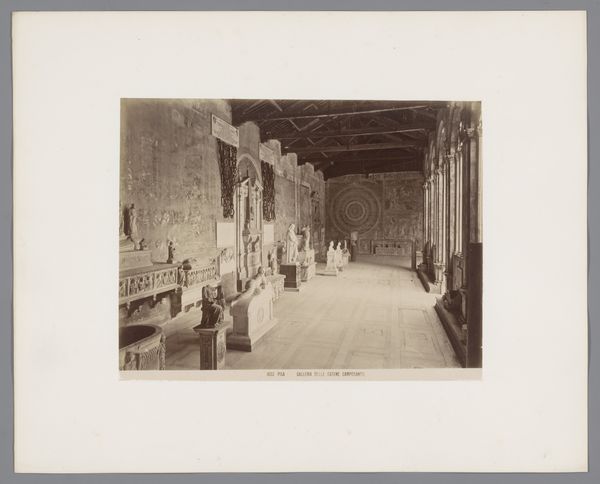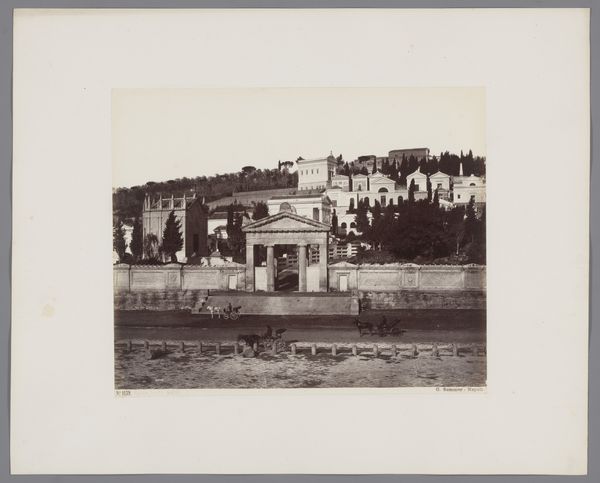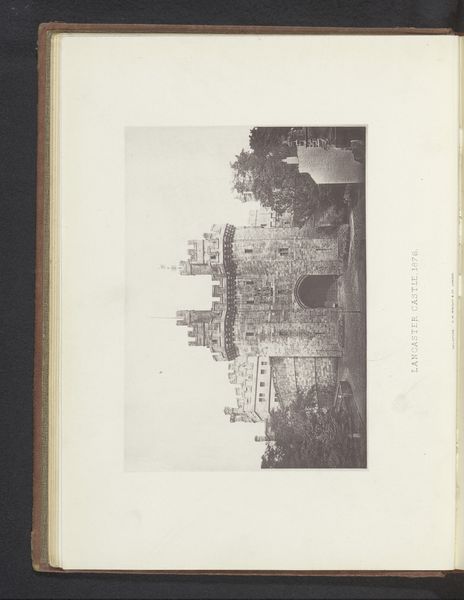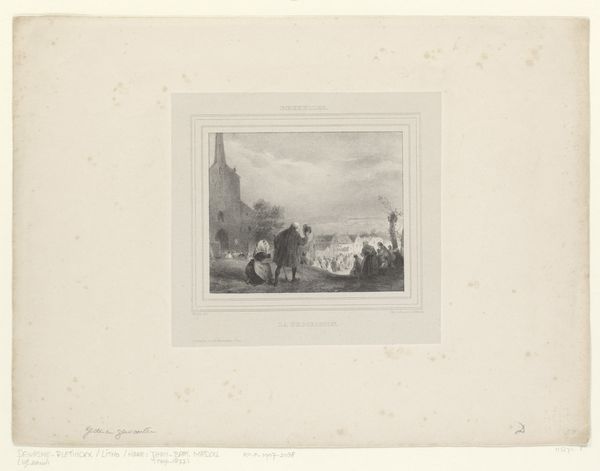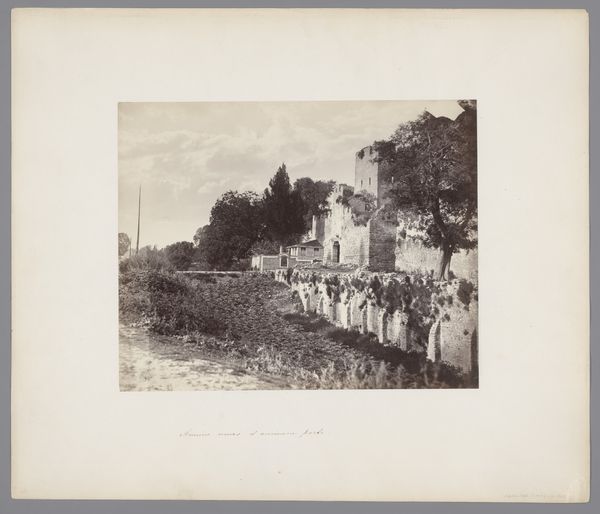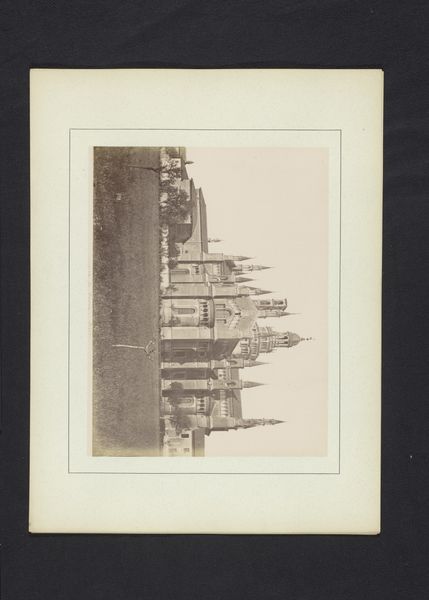
print, photography, gelatin-silver-print
# print
#
landscape
#
photography
#
gelatin-silver-print
#
history-painting
#
realism
#
building
Dimensions: height 207 mm, width 274 mm
Copyright: Rijks Museum: Open Domain
Art Historian: Here we have a photographic print titled "View of the Courtyard of the Palace of Fontainebleau," dating from around 1875 to 1900. It's rendered in gelatin silver. Curator: It's...strikingly sterile. The palace seems so distant, and the foreground feels vast and empty. Like a stage set waiting for a drama that never arrives. Art Historian: Yes, that emptiness is potent, isn't it? Palaces often carry immense symbolic weight—representing power, history, dynasty. Even when devoid of figures, as here, the architecture and space evoke those ideas. The very stone and structure resonate with the echoes of decisions made, lives lived, and eras passed. Curator: But what decisions, what lives? Who got to make them within those walls, and whose labor built them? The romanticism surrounding such grand historical places often glosses over the realities of power structures. I can’t help but look at the composition—the severe symmetry, the rigid lines—and see the visible expression of authority. It’s beautiful but also…oppressive. Art Historian: An interesting perspective. Considering Fontainebleau’s history as a royal residence from the 12th century, it’s truly layered in symbolic meaning. The numerous architectural additions, the various royal hands that shaped it, tell a visual story of evolving power and taste. Think of the Renaissance influence blended with French tradition—it’s all there in the facades and details. Curator: And that blend often serves to legitimize itself through selective memory. Which narratives are highlighted, and which are conveniently forgotten or suppressed? This photograph, in its way, participates in that process by presenting an idealized, almost pristine image. Art Historian: Perhaps the absence of figures makes it universal. Stripped bare, like this, the palace transcends any particular moment and becomes simply "palace"—an archetype in our collective visual memory. A potent image that resonates across time and cultures. Curator: Maybe so. I see potential in looking at buildings like Fontainebleau beyond traditional art-historical frameworks, exploring their social role in reinforcing unequal structures. It asks more critical questions about how the past informs the present. Art Historian: Indeed. By understanding these architectural symbols, we can deepen our own historical understanding. A photograph like this captures a nexus of historical, cultural, and political energies. Curator: Absolutely. Seeing isn’t passive, it requires engaging. I’m happy to reconsider buildings with greater agency.
Comments
No comments
Be the first to comment and join the conversation on the ultimate creative platform.
